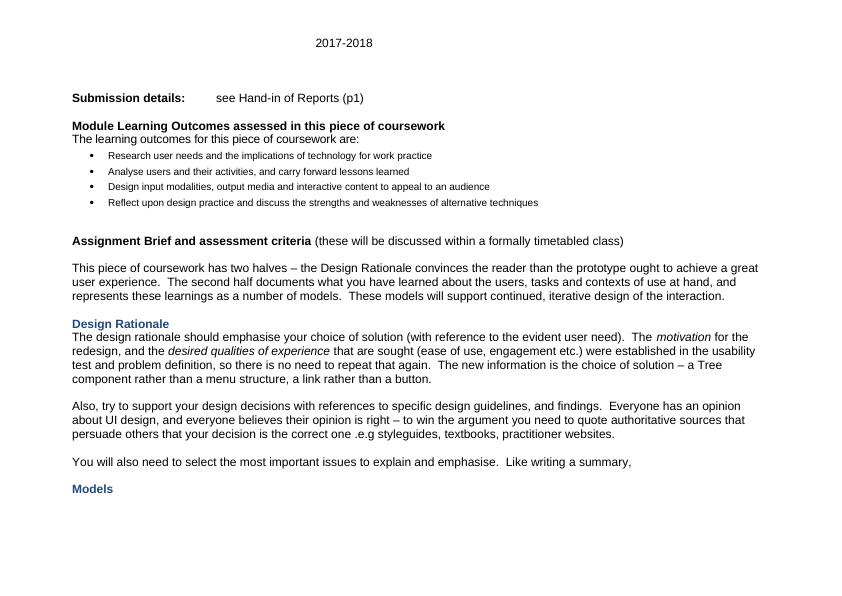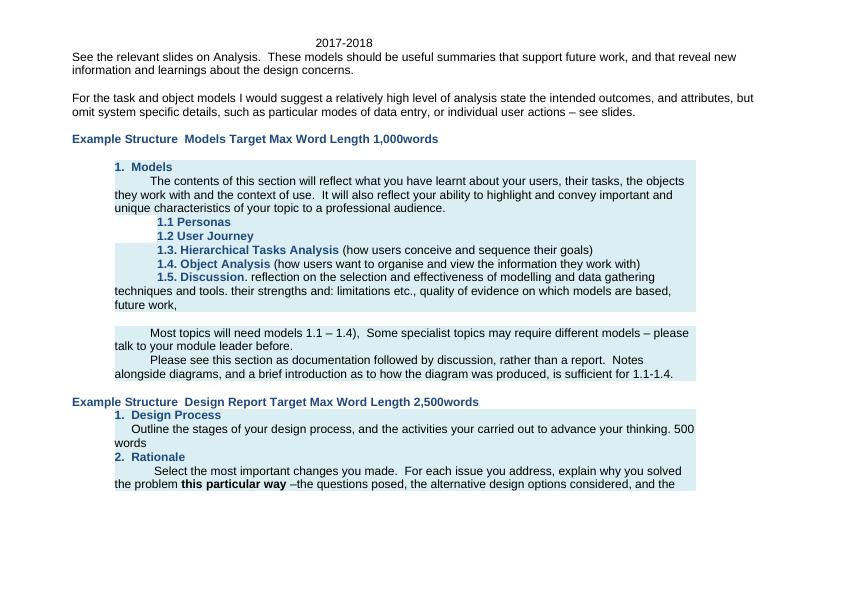Design Rationale and Models for User-Centered Interaction
4 Pages1032 Words455 Views
Added on 2019-09-18
About This Document
This piece of coursework assesses the learning outcomes of researching user needs and the implications of technology for work practice, analyzing users and their activities, designing input modalities, output media and interactive content to appeal to an audience, and reflecting upon design practice. The coursework has two halves - the Design Rationale and the Models. The Design Rationale emphasizes the choice of solution and supports design decisions with references to specific design guidelines and findings. The Models reflect what you have learned about your users, their tasks, the objects they work with, and the context of use. These models should be useful summaries that support future work and reveal new information and learnings about the design concerns.
Design Rationale and Models for User-Centered Interaction
Added on 2019-09-18
ShareRelated Documents
End of preview
Want to access all the pages? Upload your documents or become a member.
Assignment: Ux Experience Project
|28
|9742
|537
Usability Test Report Assignment
|4
|1720
|433
U22389: Advanced Database Concepts
|16
|4471
|303
The Principles of Behaviour Change Assessment Guide 2021 Full-Time School of Health Sciences Coursework - HSM139 Health Psychology & The Principles of Behaviour Change Assessment Guide 2021 Full-Time
|9
|2242
|364
Project proposal.
|2
|434
|390
EER and SQL for Database Systems and Design
|4
|1389
|126


